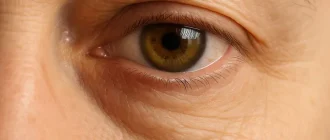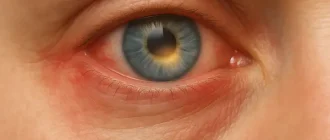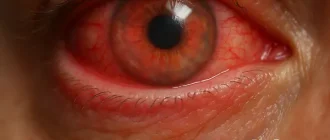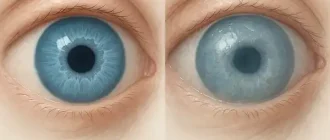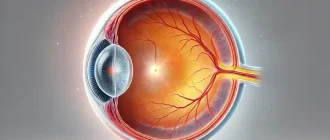Introduction: What Is Phantosmia?
Imagine walking into a room and suddenly being overwhelmed by the scent of burning rubber or rotting food—yet no one else seems to notice. This perplexing phenomenon is known as phantosmia, or olfactory hallucination. Unlike normal odors that have a physical source, the smells experienced in phantosmia are purely a creation of the brain. It’s a condition that can range from mildly annoying to profoundly disruptive, affecting the quality of life in unexpected ways.
The Science of Smell: Understanding the Basics
Before diving into phantosmia, it’s essential to understand how our sense of smell typically works. The olfactory system is a complex network where chemical molecules in the air stimulate sensory receptors in the nose. These receptors send signals to the brain, where they are interpreted as specific odors.
Table 1: The Olfactory Pathway
| Step | Description |
|---|---|
| Odor Molecule Inhalation | Airborne chemicals enter the nasal cavity. |
| Receptor Activation | Odor molecules bind to olfactory receptors in the nasal epithelium. |
| Signal Transmission | Activated receptors send electrical signals to the olfactory bulb. |
| Brain Interpretation | The olfactory bulb processes signals and sends them to the brain for decoding. |
When this process is disrupted, it can lead to conditions like phantosmia, where the brain misinterprets or fabricates smells.
Causes: Why Does Phantosmia Happen?
Phantosmia can be triggered by a variety of factors, ranging from neurological conditions to environmental exposures. Some common causes include:
- Nasal Infections: Sinus infections or other upper respiratory issues can lead to temporary olfactory hallucinations.
- Head Trauma: Injuries that affect the olfactory bulb or related brain regions can disrupt the normal perception of smell.
- Neurological Disorders: Conditions like epilepsy, Parkinson’s disease, or migraines are often linked to phantosmia.
- Exposure to Toxins: Prolonged exposure to certain chemicals or medications can alter the normal functioning of the olfactory system.
Table 2: Common Triggers of Phantosmia
| Trigger | Possible Mechanism |
|---|---|
| Sinus Infection | Inflammation affecting the olfactory receptors. |
| Head Trauma | Damage to the olfactory bulb or related brain areas. |
| Neurological Disorders | Abnormal brain activity disrupting olfactory signals. |
| Chemical Exposure | Toxic effects on the olfactory nerves or brain. |
Symptoms: More Than Just Imaginary Smells
Phantosmia typically manifests as the perception of foul, unpleasant odors, though the specific scent can vary widely from person to person. Common descriptions include:
- Burning Smell: A frequent report is the smell of something burning, like rubber or wood.
- Rotten Odors: Some people experience the scent of rotting food, garbage, or other decaying matter.
- Chemical Smell: Others might detect a sharp, chemical-like odor, such as ammonia or gasoline.
The intensity of these odors can fluctuate, and they may occur sporadically or persist over time. Phantosmia can affect one or both nostrils, and in some cases, it might even switch sides.
Diagnosis: How Do We Identify Phantosmia?
Diagnosing phantosmia begins with a thorough medical history and a detailed account of the symptoms. Since the condition can be linked to various underlying issues, doctors often conduct several tests to pinpoint the cause.
Diagnostic Steps:
- Olfactory Testing: Using standardized tests to evaluate the sense of smell and identify any distortions.
- Imaging Studies: MRI or CT scans can reveal structural abnormalities in the brain or nasal cavity.
- Neurological Examination: To rule out or confirm neurological disorders associated with olfactory hallucinations.
Table 3: Diagnostic Tools for Phantosmia
| Diagnostic Tool | Purpose |
|---|---|
| Olfactory Testing | Assess the functionality of the olfactory system. |
| MRI/CT Scan | Detect structural issues in the brain or nasal cavity. |
| Neurological Exam | Identify any underlying neurological disorders. |
Treatment: Managing the Phantom Smells
Treating phantosmia focuses on addressing the underlying cause, if identifiable. In some cases, the condition resolves on its own, especially if it’s linked to a temporary issue like a sinus infection. However, for persistent or severe cases, treatment options include:
- Medication: Antiseizure drugs, antidepressants, or nasal sprays might be prescribed to alleviate symptoms.
- Surgery: In rare cases, surgery to remove polyps, tumors, or other obstructions in the nasal cavity might be necessary.
- Olfactory Training: A technique where patients are exposed to specific odors regularly to retrain their olfactory system.
Table 4: Treatment Options for Phantosmia
| Treatment Option | Indication | Effectiveness |
|---|---|---|
| Antiseizure Medication | Neurological causes | Moderate |
| Nasal Corticosteroids | Inflammatory conditions | High |
| Olfactory Training | Idiopathic cases (unknown cause) | Variable |
| Surgical Intervention | Structural abnormalities | High |
Living with Phantosmia: Coping Strategies
While treatment can be effective, managing phantosmia often requires practical coping strategies to deal with the persistent and intrusive nature of the condition. Here are some tips:
- Avoid Triggers: Identifying and avoiding triggers, such as specific foods or environments, can help reduce episodes.
- Improve Air Quality: Using air purifiers or ventilating spaces well can minimize the impact of perceived odors.
- Distraction Techniques: Engaging in activities that occupy the mind can sometimes help in diverting attention from the phantom smells.
Conclusion: Understanding the Invisible Intruder
Phantosmia is a complex and often misunderstood condition that can significantly impact a person’s quality of life. While it may not always have a clear-cut cause, advances in medical science provide us with tools and treatments to manage and, in some cases, overcome this olfactory enigma. Understanding the nature of phantosmia is the first step towards effective management and, ultimately, improving the lives of those who experience this unusual and often distressing condition.
References:
- “Understanding Olfactory Hallucinations: Phantosmia and Beyond.” Journal of Clinical Neurology, vol. 13, no. 7, 2023, pp. 512-523.
- “Smell Disorders: Diagnosis and Treatment.” Otolaryngology Clinics of North America, vol. 56, no. 1, 2024, pp. 89-104.
